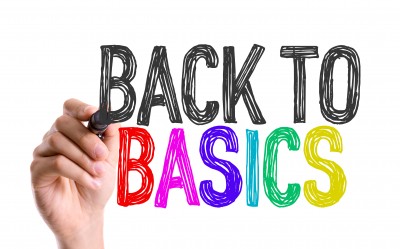Workforce Retention: Getting Back To The Basics


The daunting challenge of workforce retention is all-consuming right now, but the good news is that solutions are in our midst, and they aren't as difficult as we might think. In our Reveal Aging White Paper study, it was found that the cost of replacing an employee can be upwards of 16% of the annual salary.
Rather than emphasizing new innovative ways to help manage workforce retention, the answer could lie in simplicity. This is where getting back to the basics within the workplace can be beneficial and economical for organizations. Last week I had the opportunity to attend The Pioneer Network conference in Denver, CO. Collectively, we talked to hundreds of leaders, and many expressed in one way or another the need to find solutions to re-energize their employees.
What is Getting Back to the Basics About?
"Getting Back to the Basics" means that we invest in the core of our business- our employees. We do this with a foundation of respect, dignity, and appreciation for all. The opportunities are endless, and as stated by Dr. Abe Mathew, Senior Executive Director at Parkway Place CCRC in Houston during a Skilled Nursing News webinar entitled, "Workforce: Should I Stay or Should I Go", "It's all about the people"!
As stated in our Reveal Aging White Paper investing in human capital is a solution that can encompass applying experiential learning and Micro-learning strategies to:
- Boost Engagement
- Close Skill Gap
- Foster Practical Application in the workplace
- Enable use of Commonly Used Technology
Experiential learning places the learner directly in touch with the realities being studied. It is a cycle where one experiences, reflects, thinks, and acts, leading to motivated action and change.
Microlearning is based on the principle of content chunking, a concept that originates from the field of cognitive psychology. Content is broken into shorter, bite-sized pieces that are manageable and easy to remember.
“Human capital is the collective knowledge, experience, skills, and abilities that employees bring to an organization. It may sound a little clichéd, but human capital is the most valuable asset an organization can have.” -Richard Pummell, human resources lead at DevelopIntelegence
What are the "Basics"?
Respect
One of the most essential traits in creating a positive work culture is respect. This will create a work environment that will allow you and your team to accomplish goals together. Personal feelings should be placed assisted, and a respectful attitude should be made standard. Both management and staff can show respect for one another by providing them with attention when needed, offering an open ear to new ideas, and communicating with kindness and empathy.
Dignity
Sociologist Randy Hodson explains in Dignity at Work that human dignity is the ability to establish a sense of self-worth and self-respect and to enjoy the respect of others, which is necessary for a fully realized life. Defending dignity and realizing self-respect through work is key to a team's wellbeing. Ensuring the dignity of employees is equally important for organizations as they attempt to make effective use of their human capital.
Appreciation
A recent article by SHRM Appreciation: A Key to Company Success states that genuine appreciation recognizes the value and worth of employees in all types of situations. And appreciation doesn’t just mean an occasional word of gratitude; it means demonstrating your obsession with the value all workers bring to your organization—from the security guard to the assembly-line employee to the floor supervisor.
Conclusion
When it comes down to it, solving the problem of employee retention falls onto one of the most basic of basics: treating our employees and peers as human beings. By utilizing respect, dignity, and appreciation, we can lead by inspiring those around us and building an environment worth working in.


